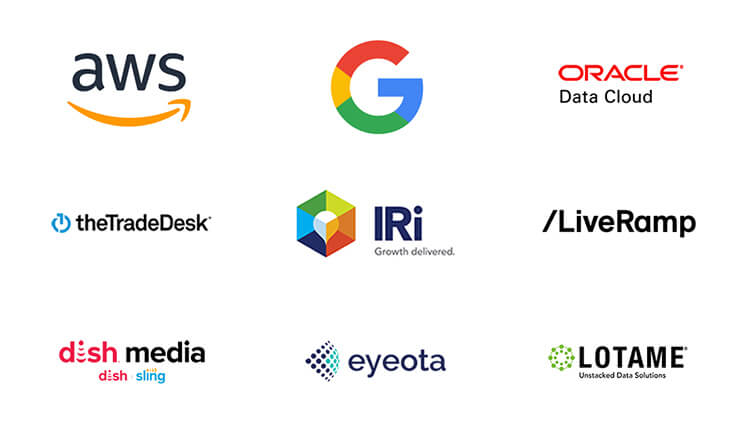What can data integration do for marketing?
Learn about how data integration can identify trends in customer behavior

Customer data integration gives marketers an in-depth view of customer behavior, so you can better segment and target your audience. This provides the tools for more personalized messages and optimized campaigns. It can also help identify important trends in customer behavior, allowing you to make better decisions and improve your overall marketing strategies.
But what is customer data integration, and why should you care?
Customer data integration (CDI) compiles customer data from various sources into one cohesive view. This single view can then provide you with insights into customer behavior, important market trends, and your customers’ preferences. This ensures that you have a better idea of who your customers are and their wants and needs since you have a more comprehensive view of their interactions with your company. In turn, you can better meet your customer’s needs by providing them with a more personalized experience.
With many different types of data integration, it can be tough to decide which is the best method for your campaign. Let’s explore some of the most effective data integration methods and how your business can best use them.
ETL (Extract, Transform, Load) and ELT (Extract, Load, Transform) are two of the most common methods of data integration. Their key difference is their order of operations.
ETL integrations extract data from multiple sources before transforming it into a uniform format and then loading it into a destination system where it can be manipulated and analyzed. The primary advantage of the ETL method is that it is quicker to implement than ELT, with lower maintenance costs and the ability to support complex data transformations.
ETL is better suited to situations where your customer data needs to be cleaned and transformed before it’s loaded into the destination system. Since the ETL method allows you to transform customer data while it’s still in the source system, you can format, manipulate, and filter everything before you load it into your destination system.
With an ELT integration, the last two steps are flipped, with the extracted data being loaded into the destination system before it is transformed into a uniform format. Once integrated, the ELT method is generally faster and more efficient than ETL while offering a greater degree of flexibility. ELT is often a better choice for data integrations that require you to quickly load large amounts of data into your destination system without cleaning or transforming it first.
CDC captures and records any changes that occur within your source system. These types of integrations are useful for keeping track of changes in large source systems, such as databases, and replicating them within your destination system.
Often used interchangeably with data integration itself, data consolidation describes the act of combining data from disparate corralled sources and storing them in a single place, allowing users to manipulate all of the data from a single point of access.
Replication methods of data integration automatically copy data from one system to another, keeping data from multiple systems synchronized in one convenient place.
Data propagation is a technique that marketers can use to ensure that changes made in customer data in one system are accurately reflected in all the other systems that have access to that data. This is handy for keeping multiple databases and apps synced with each other. Data propagation works by pushing the changes made to one system out to all other systems.
Virtualization is a type of data integration that creates a virtual copy of data from multiple sources, displayed through an abstraction layer. This type of integration is useful for creating a unified view of data without having to physically move the data.
Data virtualization is a more developed version of data federation, which similarly creates a unified view of data from various sources, but requires said data to be physically integrated into the destination system.
Data silos, where customer data ends up stored in various separated systems, becoming difficult to access and use, are a common problem for modern marketers. By taking your customer data out of those siloed environments and integrating it into one central system, your business can vastly improve data accuracy, which can provide you with the ability to make better decisions and drive better results.
Keeping all of your customer data in one centralized system is an easy way of monitoring and protecting your data from potential threats, like data breaches and other security issues.
Integrated customer data also helps reduce data errors such as redundancies, incomplete entries, and inaccurate information. These common errors keep your information from being as useful as it can be, so by eliminating some of these human errors with a more integrated customer data system, you can ensure that all of the customer data in your system is up-to-date and accurate.
By integrating your customer data into one system, you can more easily segment your customers, identify trends in their behavior, and create well-targeted campaigns that get you the most out of your customer data, driving better results.
The digital age has brought a wealth of data that businesses can use to better understand and serve their customers. Customer data integration is a powerful tool that helps companies use this data to gain a competitive edge.
E-commerce businesses can use customer data integration to understand their customer base better. This can help e-commerce businesses smoothly identify the customer segments that are more likely to purchase their products or services, allowing them to target their marketing efforts more effectively.
Patient behavior and preferences are also useful metrics that customer data integration can make more apparent to healthcare providers. Many non-clinical factors, like housing, transportation, socioeconomics, and even geography, can influence patients’ quality of care. Data integration can help providers combat those factors to provide the best care possible.
Having an accurate idea of customer purchasing habits and their correlations with certain customer segmentations shows retailers who are buying their products and under which circumstances. This allows retailers to reverse engineer success and avoid potential challenges with effective marketing efforts.
Finance is deeply personal, so it’s important as a financial services company to fully understand the customers who need your services and what their needs are. Customer data integration allows financial companies to understand their customer preferences and therefore understand where to focus their marketing efforts for maximum effect.
The first option is to manually sort through your data and move it piece by piece from your source to its destination. This process can be time-consuming, but it is commonly the most cost-effective option. Manual integrations of customer data require a detailed understanding of the data you are sorting through and the technical ability to manually transfer it from one system to another.
Another option is to create or use an automated tool to move your customer data. This option is attractive for companies that don’t necessarily have the time or resources to move their customer data manually. These automated tools often save time and money and make the data integration process much easier.

We understand how important it is to have access to accurate and up-to-date customer data. With our tools and resources, you have the ability to make the most out of your integrated customer data. Contact us today to learn more about how Experian can help you activate and use your customer data for maximum marketing impact.
We can help you create marketing strategies catered to the specific preferences and behaviors of your current and prospective customers. We specialize in helping brands discover data-driven insights to make an everlasting impact on consumers.
Our data and identity products and services can help you learn more about customers and target audiences, leverage data resources, improve targeted marketing, create personalized campaigns, and optimize marketing strategies.
With us, you’ll understand your consumers better, make more effective data-informed decisions, and increase your customer base for bigger revenue.

This site is protected by reCAPTCHA and the Google Privacy Policy and Terms of Service apply.